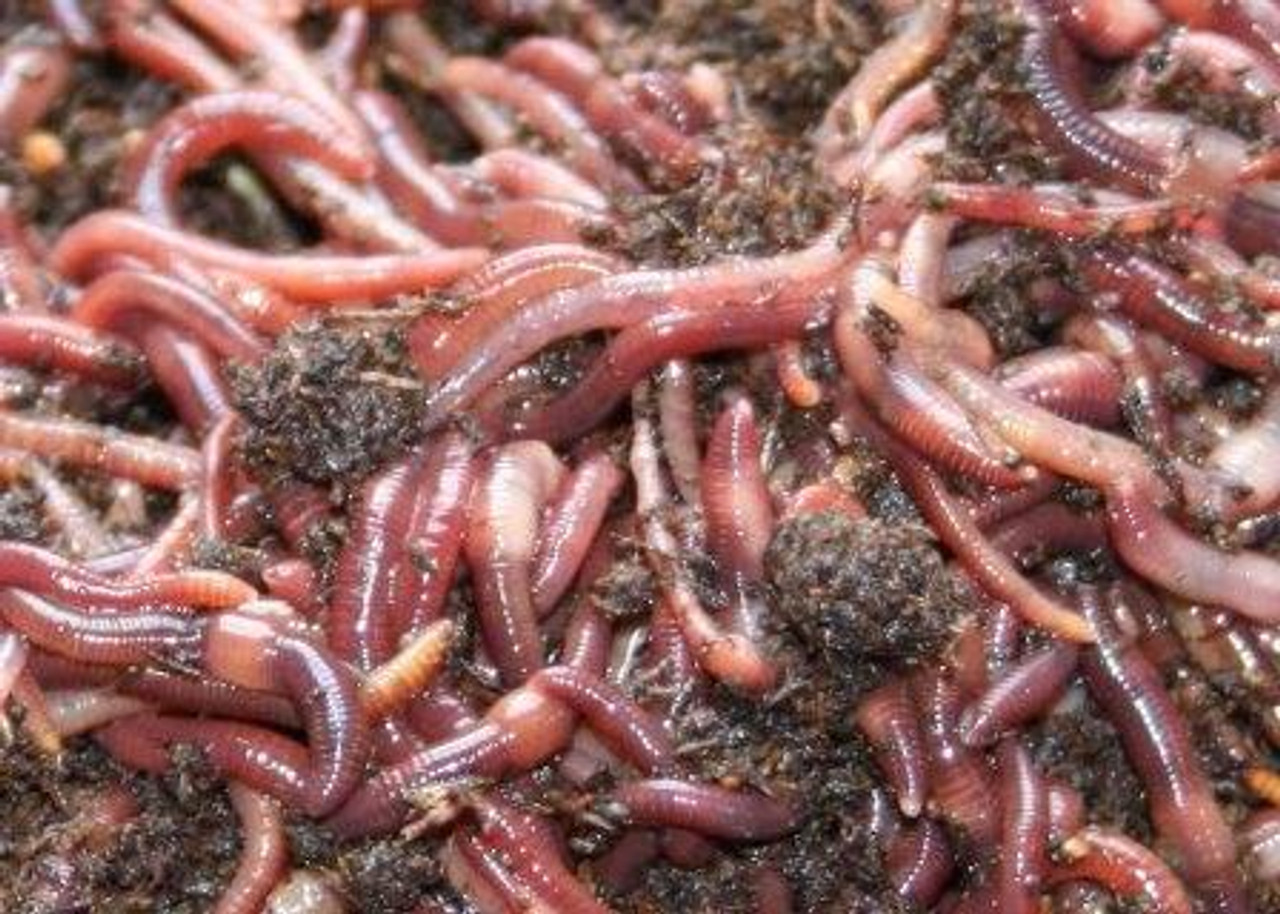Lake Hickory Bait Provides the Tools You Need for a Perfect Lawn
Lake Hickory Bait Provides the Tools You Need for a Perfect Lawn
Blog Article
Red Wigglers: The Unsung Heroes of Organic Waste Recycling
Red wigglers, or Eisenia fetida, offer as important agents in the organic waste recycling procedure, transforming disposed of products right into important vermicompost. Their effective malfunction of raw material not only improves soil high quality but additionally adds to lasting waste monitoring techniques. As the globe increasingly seeks options to fight waste build-up and enhance agricultural productivity, understanding the role of these worms ends up being essential. What mechanisms allow them to grow in compost atmospheres, and just how can they be properly made use of in both domestic and commercial setups? Exploring these questions exposes the broader implications of vermicomposting in our eco-friendly landscape.
What Are Red Wigglers?
The impressive resilience of red wigglers, scientifically called Eisenia fetida, emphasizes their essential function in natural waste recycling. These little, reddish-brown earthworms are generally located in disintegrating raw material, such as garden compost heaps and manure lots. Lake Hickory Bait. Unlike various other earthworm species, red wigglers prosper in nutrient-rich settings and are extremely efficient at damaging down organic materials, making them important for vermicomposting

(Red Wiggler Express)In addition to their role in waste reduction, red wigglers add to soil health by improving soil framework and oygenation with their tunneling tasks (Lake Hickory Bait). Their visibility in composting systems not just enhances decay rates however likewise advertises a lasting method to waste monitoring, highlighting their significance in eco-friendly preservation efforts
Advantages of Composting With Worms
Composting with worms, specifically red wigglers, provides various advantages that improve both waste administration and dirt health and wellness. These worms effectively damage down natural waste, converting it into nutrient-rich vermicompost that improves soil. This procedure accelerates decay, enabling a faster recycling of kitchen scraps and various other natural products compared to conventional composting methods.
In addition, the vermicompost created by red wigglers is teeming with helpful microorganisms, which assist improve dirt structure, oygenation, and dampness retention. This boosts the general health of plants, promoting strenuous growth and enhanced yields in yards and agricultural setups. Additionally, the use of worms in composting minimizes the manufacturing of greenhouse gases, such as methane, adding to a more sustainable waste management system.

Exactly How to Begin Vermicomposting
Developing a vermicomposting system is a straightforward procedure that can yield considerable advantages for both waste management and dirt enrichment. To begin, choose a suitable container, such as a plastic bin or wood box, with sufficient ventilation holes to ensure appropriate air flow. The dimensions ought to preferably be about 2 feet by 3 feet, allowing adequate room for the worms to flourish.
Following, prepare bed linens material, which can contain shredded paper, cardboard, or coconut coir. This bedding ought to be moistened to create an appropriate habitat for the worms. As soon as the bed linen remains in area, introduce red wigglers (Eisenia fetida) into the bin, typically around one extra pound of worms for each square foot of area.
Following the positioning of worms, include natural waste, such as fruit and vegetable scraps, coffee premises, and crushed eggshells. Stay clear of including dairy products, meat, or oils, as these can create smells and draw in parasites. Position the bin in a shaded, temperature-controlled location to preserve ideal conditions for worm task. With these actions, you will properly launch a vermicomposting system that Red Wiggler Express adds to sustainable waste management and enriches your dirt.
Maintaining a Healthy And Balanced Worm Container
(Red Wiggler Express)Maintaining a worm bin flourishing requires routine attention and like make sure the health and wellness of the red wigglers and the efficiency of the composting procedure. Proper upkeep begins with keeping track of the moisture levels; the container ought to be wet however not waterlogged. A great general rule is to keep a consistency comparable to a wrung-out sponge.
Gently blending the bed linens and food scraps every few weeks stops compaction and makes certain that all worms have access to oxygen. Furthermore, it is vital to feed the worms appropriately.
Temperature policy is one more important facet. Red wigglers thrive in a variety of 55 to 77 degrees Fahrenheit. If the bin ends up being also hot or cold, the worms may become stressed out - Lake Hickory Bait. Occasionally examine for indicators of health, such as worm population growth and the presence of healthy spreadings. By vigilantly managing these elements, one can preserve a robust and efficient worm bin.
Influence On Sustainable Living
The effective upkeep of a worm bin not only benefits the health of red wigglers but additionally adds significantly to lasting living techniques. By reusing natural waste, such as kitchen area scraps and yard particles, red wigglers assist divert substantial quantities of product from garbage dumps. This reduction in waste not just decreases greenhouse gas emissions but additionally reduces the environmental worry related to waste management.
Moreover, the spreadings created by red wigglers act as a nutrient-rich natural fertilizer, boosting dirt health and wellness and advertising plant growth. This natural alternative to chemical plant foods supports lasting agriculture and horticulture practices, reducing dependence on artificial inputs that can harm environments. Furthermore, worm composting promotes understanding of waste management, encouraging individuals and areas to adopt even more lasting practices.

Final Thought
In recap, red wigglers work as crucial factors to natural waste recycling via their effective disintegration of organic materials. Their capability to produce nutrient-rich vermicompost boosts soil wellness and supports lasting farming methods. By incorporating vermicomposting into waste monitoring methods, people and neighborhoods can substantially lower waste while advertising environmental sustainability. The role of Eisenia fetida in fostering healthy environments highlights the value of these microorganisms in attaining lasting living and improving soil fertility.
Report this page